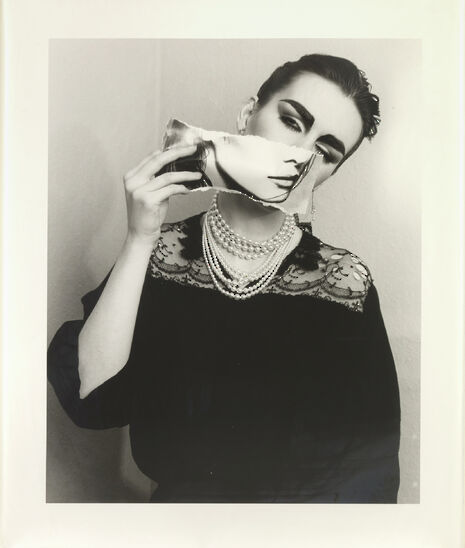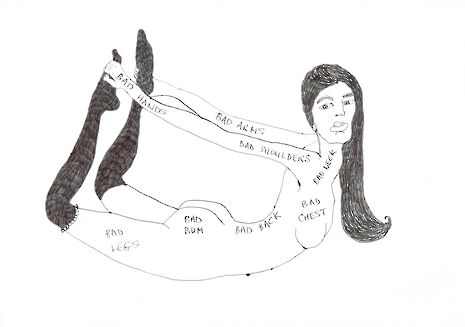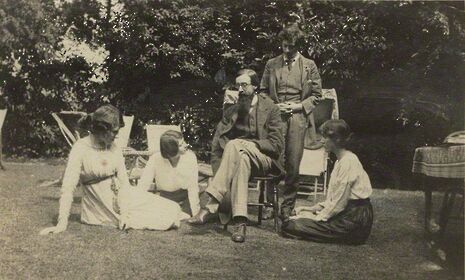‘Streaks of goddess-like women’: reflecting on the Fitzwilliam exhibition on Virginia Woolf
The self, gender, and ‘streaks of goddess-like women’ wreath the latest Fitzwilliam exhibition inspired by Virginia Woolf’s work

It feels particularly poignant that this triumphant exhibition celebrating the work of Virginia Woolf has made its way to the Fitzwilliam Museum. Much of it is centred around ideas raised by Woolf’s A Room of One’s Own, a work born from lectures delivered by Woolf to Girton and Newnham in October 1928, and which was donated to the Fitzwilliam after Woolf’s death. The works, ranging from paintings to ceramics to film, have previously been exhibited at Pallant House Gallery and Tate St Ives, and will now be on show at the Fitzwilliam Museum until 9th October.
Stepping into the gallery space is, frankly, joyous. The first room,‘The Self in Public’, is strikingly light in contrast to the imposing deep blues and reds of the other rooms in the Fitzwilliam. Immediately we are confronted with Gisèle Freund’s photograph of Woolf’s writing table in the garden of her home, Monk’s House, in the sleepy town of Lewes, East Sussex. Notebook, ink pen, a vase of flowers and a ceramic ashtray. All are framed by the writing table, just as the photograph itself is framed by a view of the hall of women ahead.

The walls themselves are wreathed with illustrations by France-Lise McGurn: a rainbow of shades streak goddess-like women across the room. Most are naked, apart from a pair of trousers perhaps, or a buttoned jacket. Mirage-like, they fade in and out of one another, joining hands and feet and faces as they stretch languidly, beautifully. These are the stretches of powerful women: women publicly and unashamedly exploring their own capabilities. Isolated hands grasp, profiles muse, eyes gaze. They smoke and stare and reach. Their brilliance is an inviting one, but equally one that demands respect.
"female artists taking control of the presentation of themselves and their subject."
The works in this room are musings on selfhood; female artists taking control of the presentation of themselves and their subject. Paintings and photographs line the walls, including a portrait of Dame Ethel Walker, famed for her representation of Britain at the Venice Biennials of 1930 and 1932. A series of works in film are displayed on boxy televisions in the centre of the room.
There are three-dimensional pieces in mixed media like Penny Goring's Pyre, 2016, a rendering of femininity in phallic shapes in the sexualised textures of velvet, satin, leather, faux fur and PVC, overlaid with snatches of embroidered text, reminiscent of Tracey Emin. Rebecca Warren explores similar ideas with her Manliness Without Ostentation (I learnt From What I Heard and Can Remember of my Father), 2017: a subtly masculine form in pink neon tubing, delicately veiled by thin copper wires and backed with the earthy texture of wood washed with a delicate cream.

These are set alongside an oil painting of Virginia Woolf by her sister Vanessa Bell and a series of documents detailing the plight of the suffrage movement with which both sisters were involved. The room as a whole is a portrait of womanhood, produced by women. Investigating gender was ever-present in Woolf’s work, from her rendering of the inner mind of Mrs Dalloway, to her explorations of gender through Orlando’s seamless transition from male to female.
Mothers, sisters, goddesses and icons stand hand in hand. All as women of value in their own right.
The second room is entitled ‘The Self in Private’ and tackles the ‘numerous ambitions, desires, concerns and private contradictions of artists who have followed a similar path to Woolf.’ It showcases Lucy Stein’s 2017 Book of Shadows - a vast oil, collage, and charcoal piece framed by a series of ceramics lined up beneath it. Hannah Wilke’s Sweet Sixteen also uses ceramics, rendering sixteen yonic shapes in a vivid candy pink. Ceramics play an important role in this room’s reflection of Woolf’s conviction that ‘A woman must have money and a room of her own if she is to write fiction.’

The collection of pottery, furnishing fabrics, and the hand-painted motif that spans the walls of this room (Shrimp Shell, Eleanor Smith, 2018), brings to mind the highly decorated and carefully curated interiors of Charleston, the so-called home of the Bloomsbury Set. The house is thick with wallpapers painted by Vanessa Bell, lampshades made by Duncan Grant (Bell’s lover), and material relics of the brilliance of the group who constantly filtered through. Every surface bears an homage, whether painted, sewn or written, to the creativity of the circle that surrounded Virginia Woolf and all that they stood for.
The overall effect is one of a carefully curated representation of this halo that surrounds Woolf. There are explorations of femininity and of androgyny, of the craft of writing and of craft itself. Mothers, sisters, goddesses and icons stand hand in hand. All as women of value in their own right. To walk through this exhibition is to walk through a kind of visual manifestation of everything that Woolf has come to represent.
 News / Cambridge University disables comments following Passover post backlash 24 April 2024
News / Cambridge University disables comments following Passover post backlash 24 April 2024 Comment / Gown vs town? Local investment plans must remember Cambridge is not just a university24 April 2024
Comment / Gown vs town? Local investment plans must remember Cambridge is not just a university24 April 2024 News / Fitz students face ‘massive invasion of privacy’ over messy rooms23 April 2024
News / Fitz students face ‘massive invasion of privacy’ over messy rooms23 April 2024 Interviews / Gender Agenda on building feminist solidarity in Cambridge24 April 2024
Interviews / Gender Agenda on building feminist solidarity in Cambridge24 April 2024 Comment / Does Lucy Cavendish need a billionaire bailout?22 April 2024
Comment / Does Lucy Cavendish need a billionaire bailout?22 April 2024





